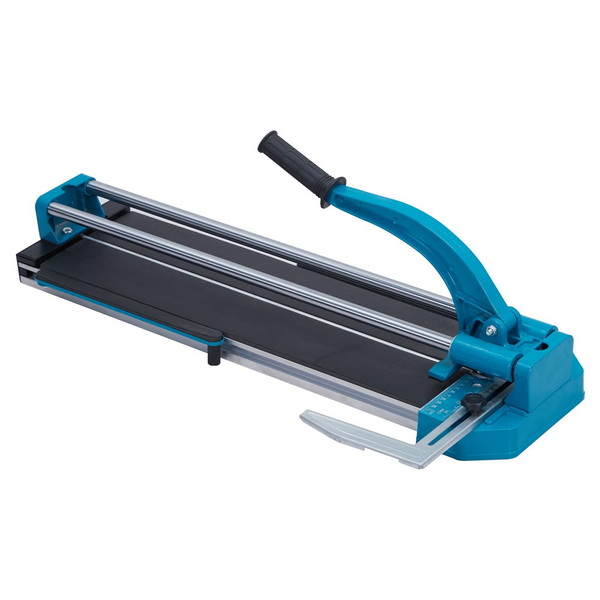Content Menu
● The Composition and Properties of Tungsten Carbide
● The Manufacturing Process of Tungsten Carbide Cutting Tools
● Applications of Tungsten Carbide in Cutting Tools
>> Milling Operations
>> Drilling Applications
>> Turning Processes
>> Reaming Operations
● Advantages of Tungsten Carbide Cutting Tools
● Tungsten Carbide in Specialized Cutting Applications
>> High-Speed Machining (HSM)
>> Cutting Difficult Materials
>> Precision Cutting
● Innovations and Future Trends in Tungsten Carbide Cutting Tools
● Environmental and Safety Considerations
● Conclusion
● FAQ
>> 1. What makes tungsten carbide superior to high-speed steel for cutting tools?
>> 2. How does the composition of tungsten carbide affect its performance as a cutting tool?
>> 3. What are the primary applications of tungsten carbide cutting tools in manufacturing?
>> 4. How are tungsten carbide cutting tools manufactured?
>> 5. What are the environmental concerns associated with tungsten carbide cutting tools?
● Citations:
Tungsten carbide has revolutionized the metal-cutting industry, enabling increased speeds and feeds while providing longer tool life[11]. This remarkable material, often simply called "carbide," has become a staple in machine shops and manufacturing facilities worldwide. In this comprehensive article, we will explore the properties, applications, and advantages of tungsten carbide in cutting tools, shedding light on why it has become the material of choice for many cutting applications.

The Composition and Properties of Tungsten Carbide
Tungsten carbide is a compound of tungsten and carbon, typically bonded with cobalt to create a material that combines exceptional hardness with toughness[6]. This unique composition results in a material that offers several key properties:
1. Extreme Hardness: Tungsten carbide ranks just below diamond on the scale of abrasive resistance, making it one of the hardest materials available for cutting tools[5].
2. High Heat Resistance: The material can withstand high temperatures generated during cutting processes without losing its integrity or performance[5].
3. Wear Resistance: Due to its hardness and heat resistance, tungsten carbide tools maintain their sharp cutting edges for extended periods, even under heavy workloads[5].
4. High Melting Point: Tungsten carbide has a melting point exceeding 1800°C, allowing it to maintain its properties even in extreme cutting conditions[2].
The Manufacturing Process of Tungsten Carbide Cutting Tools
The production of tungsten carbide cutting tools involves a sophisticated process known as powder metallurgy. Here's a simplified overview of the steps involved:
1. Raw Material Preparation: Tungsten carbide powder is mixed with cobalt powder and other additives[11].
2. Blending: The mixture is combined with a liquid such as alcohol or hexane and placed in a rotating drum called a ball mill[11].
3. Forming: The blended powder is pressed into the desired shape using high-pressure molds.
4. Sintering: The formed pieces are heated in a controlled atmosphere to temperatures near the melting point of cobalt, causing the cobalt to act as a binder for the tungsten carbide particles.
5. Finishing: The sintered parts are ground, polished, and sometimes coated to achieve the final product.
Applications of Tungsten Carbide in Cutting Tools
Tungsten carbide's exceptional properties make it suitable for a wide range of cutting applications:
Milling Operations
Carbide end mills are widely used in milling operations due to their ability to remove material quickly and efficiently[7]. These tools can handle a variety of materials, including aluminum, steel, and titanium, producing smooth and accurate finishes.
Drilling Applications
Carbide drills excel in high-speed drilling applications, capable of creating precise holes in materials such as steel, aluminum, and cast iron[7]. Their ability to withstand high temperatures and speeds makes them ideal for demanding drilling tasks.
Turning Processes
Carbide inserts are commonly employed in turning operations, where the workpiece rotates while the cutting tool removes material from the surface[7]. These inserts are particularly valuable in high-volume production environments due to their durability and heat resistance.
Reaming Operations
Carbide reamers are used to enlarge and finish existing holes, producing smooth and accurate finishes in applications that require tight tolerances[7]. They can be used on various materials, including steel, aluminum, and composites.
Advantages of Tungsten Carbide Cutting Tools
The widespread use of tungsten carbide in cutting tools can be attributed to several key advantages:
1. Superior Hardness and Wear Resistance: Tungsten carbide tools maintain their sharp cutting edges for longer periods compared to traditional high-speed steel (HSS) tools[8]. This results in improved cutting performance and reduced tool replacement frequency.
2. High-Temperature Performance: The material's ability to withstand high temperatures allows for faster machining speeds without compromising tool integrity[8].
3. Improved Surface Finish: Due to their ability to maintain a sharp cutting edge, carbide tools generally produce a better finish on machined parts[8].
4. Versatility: Tungsten carbide cutting tools can be used on a wide range of materials, from softwoods to hardened steels and composites[4].
5. Cost-Effectiveness: While initially more expensive than HSS tools, the longer lifespan and improved performance of carbide tools often result in lower overall costs in high-volume production settings.
Tungsten Carbide in Specialized Cutting Applications
Beyond general-purpose cutting tools, tungsten carbide finds applications in specialized cutting scenarios:
High-Speed Machining (HSM)
Tungsten carbide is the most widely used material for high-speed machining tools[3]. Its unique combination of hardness and toughness allows it to withstand the extreme conditions encountered in HSM operations.
Cutting Difficult Materials
Carbide cutting tools are particularly effective when machining tough materials such as carbon steel, stainless steel, and other alloys that would quickly wear out traditional cutting tools[1].
Precision Cutting
The stability and wear resistance of tungsten carbide make it ideal for precision cutting applications, such as in the production of intricate molds and dies[10].

Innovations and Future Trends in Tungsten Carbide Cutting Tools
The field of tungsten carbide cutting tools continues to evolve, with ongoing research and development aimed at enhancing performance and expanding applications:
1. Advanced Coatings: Researchers are developing new coatings, such as titanium aluminium nitride or titanium chromium nitride, to further enhance the thermal stability and longevity of carbide tools[8].
2. Nano-Grain Carbides: By reducing the grain size of tungsten carbide particles to the nanoscale, manufacturers can create tools with even greater hardness and wear resistance.
3. Alternative Binders: While cobalt is the most common binder for tungsten carbide, researchers are exploring alternatives like iron aluminide to improve wear and oxidation properties while reducing costs[8].
4. Customized Grades: Tool manufacturers are developing specialized carbide grades tailored to specific applications and materials, optimizing performance for particular cutting scenarios.
5. Additive Manufacturing: 3D printing technologies are being explored for the production of complex carbide cutting tool geometries that were previously difficult or impossible to manufacture.
Environmental and Safety Considerations
While tungsten carbide offers numerous benefits, it's important to consider the environmental and safety aspects of its production and use:
1. Resource Scarcity: Tungsten is a finite resource, and its extraction can have environmental impacts. Sustainable sourcing and recycling initiatives are becoming increasingly important.
2. Dust Hazards: The production and grinding of tungsten carbide tools can generate fine dust, which may pose health risks if inhaled. Proper ventilation and protective equipment are essential in manufacturing environments.
3. Recycling Challenges: The recycling of tungsten carbide tools requires specialized processes due to the material's hardness and composition. Developing efficient recycling methods is an ongoing area of research.
4. Energy Consumption: The high temperatures required for sintering tungsten carbide result in significant energy consumption during production. Improving energy efficiency in manufacturing processes is a focus for many tool producers.
Conclusion
Tungsten carbide has earned its place as a premier material for cutting tools due to its exceptional combination of hardness, wear resistance, and heat tolerance. Its ability to maintain sharp cutting edges under extreme conditions has revolutionized machining processes across various industries. From general-purpose milling and drilling to specialized high-speed and precision cutting applications, tungsten carbide tools offer superior performance and longevity compared to traditional cutting materials.
As manufacturing technologies continue to advance, tungsten carbide remains at the forefront of cutting tool innovation. Ongoing research into new compositions, coatings, and manufacturing techniques promises to further enhance the capabilities of carbide tools, enabling even greater precision, efficiency, and sustainability in machining operations.
While challenges such as resource scarcity and environmental considerations persist, the undeniable benefits of tungsten carbide in cutting applications ensure its continued importance in the world of manufacturing and metalworking. As we look to the future, tungsten carbide will undoubtedly play a crucial role in shaping the next generation of cutting tools and machining technologies.

FAQ
1. What makes tungsten carbide superior to high-speed steel for cutting tools?
Tungsten carbide outperforms high-speed steel in several key areas:
- Hardness: Tungsten carbide is significantly harder than HSS, allowing it to maintain its cutting edge for longer periods[8].
- Heat Resistance: Carbide tools can withstand higher temperatures without losing their properties, enabling faster cutting speeds[8].
- Wear Resistance: The exceptional wear resistance of tungsten carbide results in longer tool life and reduced downtime for tool changes[5].
- Surface Finish: Carbide tools generally produce a better finish on machined parts due to their ability to maintain a sharp cutting edge[8].
2. How does the composition of tungsten carbide affect its performance as a cutting tool?
The composition of tungsten carbide plays a crucial role in its performance:
- Tungsten Carbide Particles: These provide the extreme hardness and wear resistance[3].
- Cobalt Binder: The cobalt matrix adds toughness to the material, preventing brittleness[6].
- Grain Size: Finer grain sizes generally result in increased hardness but may reduce toughness.
- Carbide-to-Binder Ratio: Adjusting this ratio allows manufacturers to optimize the balance between hardness and toughness for specific applications[3].
3. What are the primary applications of tungsten carbide cutting tools in manufacturing?
Tungsten carbide cutting tools find use in various manufacturing processes:
- Milling: Carbide end mills are used for efficient material removal in a wide range of materials[7].
- Drilling: High-speed drilling operations benefit from carbide drills' heat resistance and durability[7].
- Turning: Carbide inserts are commonly used in lathe operations for their long life and consistent performance[7].
- Reaming: Precision hole finishing is achieved with carbide reamers[7].
- High-Speed Machining: Tungsten carbide is the material of choice for tools used in high-speed cutting operations[3].
4. How are tungsten carbide cutting tools manufactured?
The manufacturing process for tungsten carbide cutting tools involves several steps:
1. Mixing tungsten carbide powder with cobalt and other additives[11].
2. Blending the mixture in a ball mill with a liquid medium[11].
3. Pressing the blended powder into the desired shape using high-pressure molds.
4. Sintering the formed pieces at high temperatures to bond the particles together.
5. Finishing the sintered parts through grinding, polishing, and sometimes coating.
This powder metallurgy process allows for precise control over the material's composition and properties.
5. What are the environmental concerns associated with tungsten carbide cutting tools?
Several environmental considerations are associated with tungsten carbide:
- Resource Scarcity: Tungsten is a finite resource, and its extraction can have environmental impacts.
- Energy Consumption: The production of tungsten carbide, particularly the sintering process, requires significant energy.
- Dust Hazards: Manufacturing and grinding carbide tools can produce harmful dust, necessitating proper safety measures.
- Recycling Challenges: The hardness of tungsten carbide makes recycling complex, though efforts are being made to improve recycling processes.
- Cobalt Concerns: The use of cobalt as a binder has raised some environmental and ethical concerns related to its mining practices.
Citations:
[1] https://www.7leaders.com/blog/tungsten-carbide
[2] https://www.wj-tool.com/material
[3] https://www.mcctcarbide.com/tungsten-carbide/
[4] https://primatooling.co.uk/understanding-the-basics-of-tct-cutting-tools-a-guide-to-their-importance/
[5] https://primatooling.co.uk/benefits-of-tungsten-carbide-tooling/
[6] https://www.applecarbide.com/article/why-is-tungsten-carbide-used-for-cutting-tools.html
[7] https://epictool.ca/carbide-cutting-tools-the-most-common-uses-for-carbide/
[8] https://en.wikipedia.org/wiki/Tungsten_carbide
[9] https://material-properties.org/tungsten-carbide/
[10] https://www.sollex.se/en/blog/post/about-cemented-tungsten-carbide-applications-part-1
[11] https://todaysmachiningworld.com/magazine/how-it-works-making-tungsten-carbide-cutting-tools/
















